A beginner’s guide to drinking mate
For Argentinians and Uruguayans, drinking mate (mah-tay) is a way of life. If you spend any time with locals in one of these two countries, you’ll probably be invited to join in, and it’s important to be familiar with the process — like any custom, it has its own set of rules and expectations.
Firstly, what is mate? It’s a tea-like beverage drunk through a straw (bombilla) out of a small gourd-shaped cup (also called a mate). You can drink alone, but mate is generally shared: the cup is passed around and everyone drinks out of the same vessel. It’s more than just a hot drink, it’s a way to connect with the people you’re with.
There’s usually one person in charge, who fills the mate with yerba mate (a bitter, tea-like herb) and adds water. Mate is quite different to tea, where very few leaves are used. Instead, the cup is half- or three-quarter-filled with yerba, which means there isn’t much space left for water. The person in charge has the first drink, as the first brew can be quite strong — and bitter too. Some people add sugar, others drink their mate cold, but the general rule is hot and bitter.
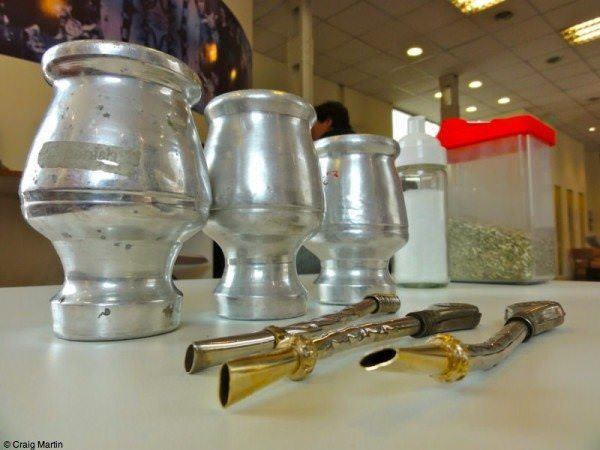
Drinking
After drinking and refilling the cup with water from a thermos, the person in charge will then pass the mate to another member of the group, who drinks as well then passes it back. If it’s your turn, you should drink all of the liquid; when it’s run out you’ll hear a sucking sound — quite like the one you probably used to make while drinking soft drinks through a straw as a kid. But don’t think about your mum telling you off back then: this noise is perfectly acceptable when drinking mate.
Don’t say thanks
When you’re done, pass the mate back to the person with the thermos, who’ll top it up and pass it on. But don’t say thanks — “gracias” in this context means you’ve had enough and don’t want another round. Of course, if that’s true, feel free to say it. If you notice that you’re being left out, you probably said “gracias” by mistake, which is exactly what happened to me the first time I drank mate — I felt quite offended that my hosts didn’t want to keep sharing with me. It wasn’t until the next day that I realised that I’d effectively told them that I didn’t want any more. Now, after a bit of practice, I can drink mate with the best of them!
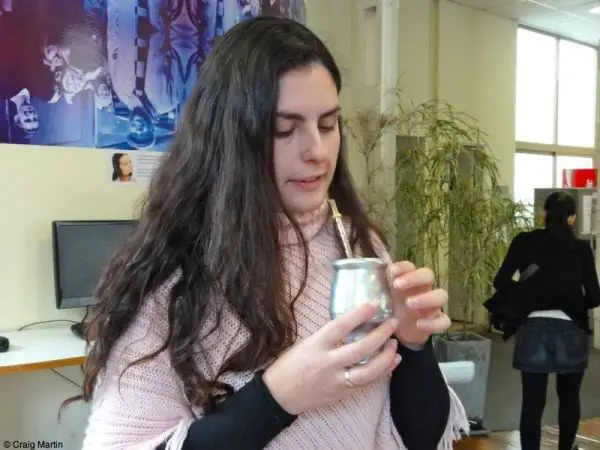
Equipment
Since mate-drinking is such an institution, Argentina and Uruguay are replete with related products and services. Street vendors sell cups and bombillas, some personalised while you wait. A bombilla straw makes a nice souvenir, since it’s small enough to fit into any corner of your backpack, though it isn’t particularly useful outside South America.
Locals drink mate on the go, often carrying thermoses of hot water tucked under one arm, which need to be refilled when empty. In the city you can buy water from a vendor’s cart of thermoses, and most service stations have hot water dispensers, where you can fill up your thermos for one peso (about 30 cents). At home, electric kettles often have two settings: one to boil the coffee, like in the rest of the world, and the other to maintain the water at mate-drinking temperature (about 60-70 degrees).
Mate has a strong, distinct flavour that might not be to your taste at first, but it’s worth trying to accustom yourself to it, because sharing a mate with locals in Argentina and Uruguay is a great way to immerse yourself in the culture of the region.
For more on Argentina, check out our Argentina country page.

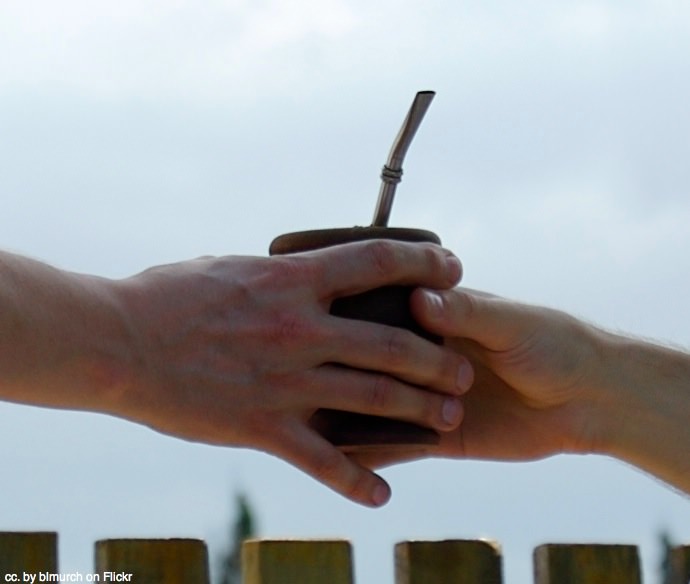

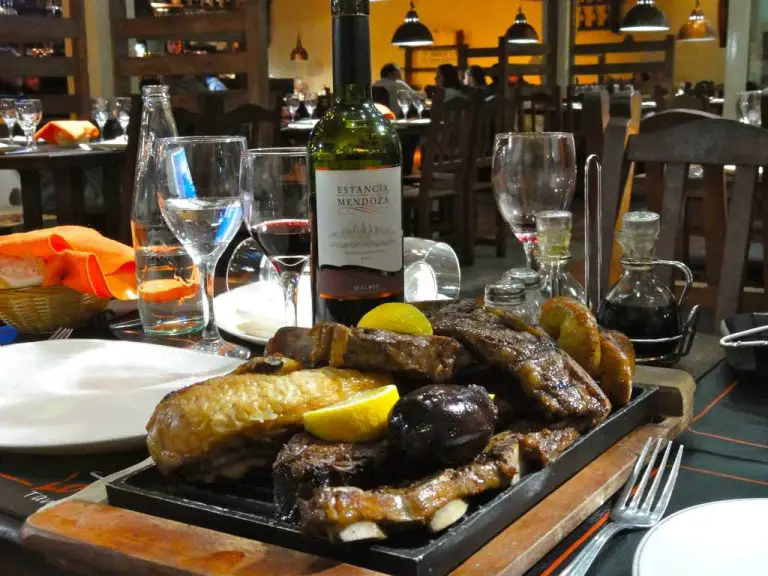


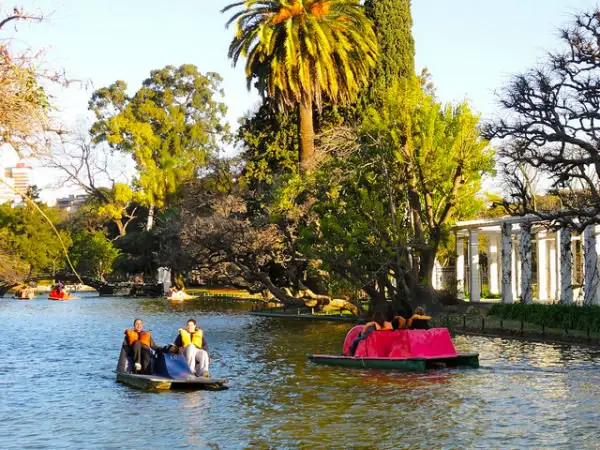
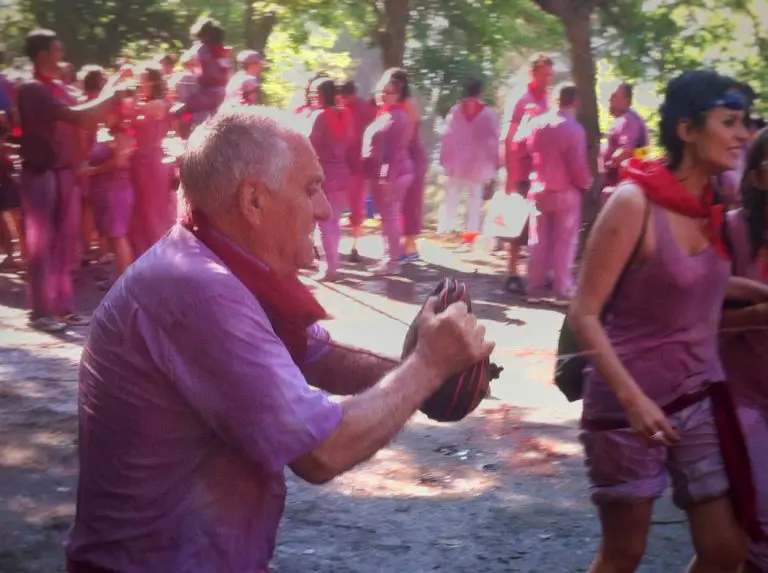
I got hooked on Mate and now drink it back home…however, I’ve done away with the whole gourd/straw combo and just stick to teabags of mate – I guess I’ve Americanized it a bit 🙂
They sell it in teabags?! I’m learning all sorts of things about shopping today. Mate teabags in the USA, Waitrose-brand cereals in NZ…
How does the taste compare? Still as bitter at the start?
In Manitou Springs, Colorado, USA recently I found a cafe of sorts that sells mate. Either ready to drink, loose leaf, or in tea bags. I bought a 100 pack of chai flavored mate bags and use them with my hot water dispenser at home. Not too bitter because the other spices mask it. Great for starting the day.
When I was in Paraguay, mate was tough for me to drink. It’s so bitter! Interesting what catches on in some places. But, the family I stayed with drank it ALL the time. They had big thermoses and would sip on mate everywhere they went. Since it was summertime when I visited, many people drank their mate ice cold.
Woops, that was me (Alexa) who made the comment above. Forgot to sign in before I made the comment.
Oh, did you try tereté too? We had it just once in Paraguay.
Ahhhh it was definitely tereté and not mate that they were drinking! They drank both, but tereté was very common everywhere in Paraguay.
Yes, it’s a strange experience after you get used to the hot, bitter mate of the south!
(Looks like it’s tereré, not tereté as I remembered.)
http://en.wikipedia.org/wiki/Mate_(beverage) vs
http://en.wikipedia.org/wiki/Terer%C3%A9
Indeed terere. I didn’t even catch the typo!
I was just talking to a friend about this! Apparently you have to drink it fast, too. No hesitations.
You don’t have to scull it, but you definitely don’t want to be nursing the mate. It’s there to share, and people can get a bit twitchy if they don’t get their hit in good time.
Planning on doing backpacking in South America and I know that I will be coming across mate often as I go down the continent and this is a great primer to get me ready. I love that it is a community thing, and not just something you slam by yourself. Fun post!